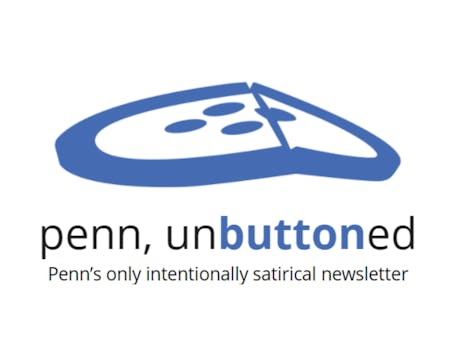Yesterday The Daily Pennsylvanian reported on the projected decline in high-school graduates set to begin next year and last until 2015. The New York Times, reporting on the same study last week, noted that this trend could cause most universities to receive fewer applications and thus suffer from less selectivity among applicants.
If you're a prospective student who picked up the paper while on your tour today - I'm sorry, but Penn and its peers do not fall under the "most universities" category in this case.
Tony Pals, spokesman for the National Association of Independent Colleges and Universities, said that earning admission to schools like Penn will still be competitive and will not likely be affected by such a decline.
But whoever you are, stop and think for a second about what acceptance rates really mean.
To prospective students, selectivity serves as an indicator of educational quality. To admissions deans, it can be used as a statistic that earns bragging rights, as single-digit figures seem to creep closer and closer to zero every year. And to students at any school, it doesn't really make a difference.
Eric Furda, who will become Penn's new admissions dean this July, said, "Whether it's right or wrong, we know that selectivity is seen as a proxy for quality," but he doesn't believe that should be the case.
And he's right.
Take, as an example, Deep Springs College, located on a cattle ranch and alfalfa farm in the middle-of-nowhere in California (literally - the school's mailbox is actually located in Nevada). Deep Springs - a two-year college that focuses on academics, labor and self-governance - exists as a community where students work the farm and run their isolated societies themselves while attending classes. It's not your typical college arrangement, to say the least. One other thing - Deep Springs accepts 10 to 15 students a year. Which means that its acceptance rate frequents the single-digit party, along with Harvard and Yale.
In two weeks or so, the Ivies and their peers will start splashing their admission rates across the headlines of their respective papers. Whoever has the lowest will be deemed "the best" this year. Michele Hernandez, president of Hernandez College Consulting, noted that "every admissions director wants to win the statistics war."
But if Deep Springs is able to be more selective with its applicant pool this year than Harvard or Yale, that doesn't mean that it offers a better education or overall experience. No one can say that baling hay in the High Desert of California for two years necessarily trumps being an underclassman in New England.
Hernandez stressed that smaller schools are often able to be more selective with their applicants due to the simple matters of size. It's natural that small colleges have low acceptance rates, but that doesn't automatically put them in the same league as larger, prestigious universities. In short, more selective schools aren't necessarily "better."
Though Penn doesn't expect a rise in the acceptance rate when the number of high-school graduates begin to decline, there shouldn't be any concern if it does. Professors aren't going to wake up and refuse to teach because Penn couldn't be as selective as the year before. The acceptance rate simply relies on the number of applicants and the number admitted - and changes in that statistic reflect changes in either number, not a change in the educational quality of any school.
So in two weeks, when acceptance rates headline campus and national newspapers, don't look at any number and think it reflects a change in school's quality from year to year. Penn will still be Penn seven years from now, regardless of a simple, often misinterpreted statistic.
Christina Domenico is a College junior from North Wildwood, N.J. Her e-mail is domenico@dailypennsylvanian.com. The Undersized Undergrad appears on Fridays.
The Daily Pennsylvanian is an independent, student-run newspaper. Please consider making a donation to support the coverage that shapes the University. Your generosity ensures a future of strong journalism at Penn.
DonatePlease note All comments are eligible for publication in The Daily Pennsylvanian.








